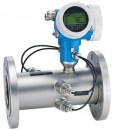ILWAUKEE, Jan. 23, 2012 — Two new Allen-Bradley power monitors from Rockwell Automation provide manufacturers with scalable, cost-effective insight into how, when and where energy is being used throughout the production process. The Allen-Bradley PowerMonitor W250 and 500 power meters offer users an opportunity to cost-effectively drive energy monitoring further into their production processes compared to previous monitoring technology.
“Many manufacturers are looking to gain deeper insight and data granularity of their industrial energy consumption,” explained Phillip Bush, power and energy management product manager, Rockwell Automation. “These two new power monitors allow our customers to drill down beneath facility or process-level monitoring to collect data from specific energy-intensive applications without significant cost and effort.”
The PowerMonitor W250 power meter offers a self-generating wireless communications platform, ideally suited for applications located in areas where hard-wired networking is cost prohibitive. The PowerMonitor 500 power meter features a large LCD display to view energy use information directly at the process being monitored without requiring any additional components.
More about these Power Monitors please click 'Rockwell Automation Power Monitors Help Control and Reduce Energy Consumption'
Nike Shop
 The latest DMU-3010, designed specifically for wind farm monitoring and building automation, has an increased number of I/O modules, a wide operating temperature range, whilst also being convenient to configure and cost effective to install.
The latest DMU-3010, designed specifically for wind farm monitoring and building automation, has an increased number of I/O modules, a wide operating temperature range, whilst also being convenient to configure and cost effective to install. The biogas market is booming. No wonder, as the gas can be used in a variety of beneficial ways – including fueling vehicles or generating heat and electricity in combined heat and power plants.
The biogas market is booming. No wonder, as the gas can be used in a variety of beneficial ways – including fueling vehicles or generating heat and electricity in combined heat and power plants. General Monitor's Model IR700 features a precision IR point sensing element that provides reliable protection against the hazards of carbon dioxide gas leaks. The IR700 offers a true fail-to-safe design for dependable gas detection performance, heated optics to eliminate condensation and a dirty optics indicator informs the user the device must be cleaned before the lenses are entirely blocked, thereby reducing downtime.
General Monitor's Model IR700 features a precision IR point sensing element that provides reliable protection against the hazards of carbon dioxide gas leaks. The IR700 offers a true fail-to-safe design for dependable gas detection performance, heated optics to eliminate condensation and a dirty optics indicator informs the user the device must be cleaned before the lenses are entirely blocked, thereby reducing downtime.